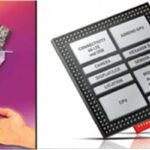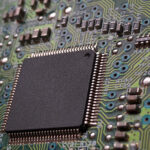 Syntiant Corp. announced the availability of its Syntiant NDP120 Neural Decision Processor (NDP), the latest generation of special-purpose chips for audio and sensor processing for always-on applications in battery-powered devices.
Syntiant Corp. announced the availability of its Syntiant NDP120 Neural Decision Processor (NDP), the latest generation of special-purpose chips for audio and sensor processing for always-on applications in battery-powered devices.
The NDP120 applies neural processing to run multiple applications simultaneously with minimal battery power consumption, including echo-cancellation, beamforming, noise suppression, speech enhancement, speaker identification, keyword spotting, multiple wake words, event detection, and local commands recognition.
Syntiant’s NDP120 brings always-on neural processing to all types of consumer products, including mobile phones, earbuds, wearables, smart speakers, laptops, smart home applications, and security devices. Ideal for use cases where audio filtering and echo cancelation are required for far-field speech processing, the NDP120 packages the Syntiant Core 2, a highly flexible, ultra-low-power deep neural network inference engine, with a highly configurable audio front-end interface. The NDP120 also supports multi-modal sensor fusion, including sensors for infrared detection, multi-axis acceleration, tilt, magnetic field, and pressure.
The Syntiant Core 2 moves larger neural networks into always-on domains with the capacity to generate shared embeddings, run ensembles, and other neural architectures concurrently or in cascades. The Syntiant Core 2 is a tensor processing core built from the ground up to support energy-efficient inference without compromising ease of programming. This second-generation architecture delivers 25x the tensor throughput of the Syntiant Core 1 found in the Syntiant NDP100 and Syntiant NDP101 devices that are currently shipping in high volumes.
The Syntiant Core 2 is built around a highly optimized tensor-based memory and processing system designed to avoid inefficiencies in stored-program architectures. Each layer independently controls its parameter, input, and output tensors consistent with graph-based execution, enabling neural designers with full control of multiple concurrent independent networks, or swapping network configurations depending on operating conditions.
The Syntiant Core 2 training development kit includes tools for running bit-exact simulations directly within high-level modeling languages, such as Tensorflow and Keras. All major frameworks can port to the Syntiant Core 2 runtime, including native support for multiple types of convolutional kernels, kernel striding, kernel dilation, downsampling layers, fully connected layers, pointwise operations, and a variety of activations.
The evolving practice of neural compression is natively supported by the Syntiant Core 2. Network architectures can mix 1-, 2-, 4-, and 8-bit weights and higher precision bias terms. For the most challenging tasks, the Syntiant Core 2 supports high precision modes, including 16-bit inputs and outputs. Quantize inference when wanted, but not just because the edge processor requires it.
The Syntiant Core 2 supports a variety of task-dependent under the hood optimizations for sparsity and time series that speed up inference and reduce power requirements without extensive post-training network optimization. With design tools supplied by Syntiant, it is possible to explore the complete power, latency, memory, and parameter requirements on the Syntiant Core 2 interactively, and perform large scale hardware-aware hyperparameter searches with the same tools. The Syntiant Core 2 can shorten time-to-product by months or years as compared to more constrained and power-intensive solutions.
The NDP120 is equipped with an Arm Cortex M0 Processor and a HiFi-3 DSP. The NDP120’s embedded Syntiant Core 2 supports more than 7 million parameters and can process multiple concurrent heterogeneous networks.
Key features of the NDP120 include: Syntiant Core 2 neural processor; Support for up to 7 audio streams; I2S/TDM output audio interface for streaming audio output, including post-processed audio; Embedded user-programmable HiFi-3 DSP; Deeply embedded Arm Cortex M0 microcontroller for device management with 48KB SRAM, dual-timers, and UART functionality; Stand-alone operation; Quad SPI target and controller interface; I2C serial interface for sensor applications and system interface; Up to 26 GPIO pins; Flexible clock generation; Onboard firmware decryption and authentication; 3.1 mm x 2.5 mm 42-ball WLBGA package (0.4 mm ball pitch)
The Syntiant NDP120 is sampling now and will be shipping in production volumes in summer 2021. Pricing for 10Ku quantities is $6 per unit.





Leave a Reply